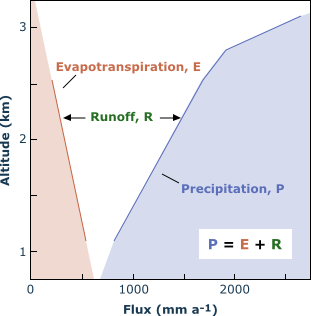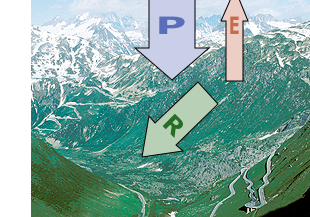The ecosystem water balance (hydrology)
Recall the key points of the lesson Dynamic mountain climate. Water relations of alpine ecosystems are driven by four components:
- The duration of the snow-free period
- Precipitation/evapotranspiration ratio
- Ground cover by vegetation (LAI)
- Plant available soil depth
The shorter the season, the less precipitation is needed to meet evaporative demand. Since precipitation tends to increase with elevation in most extratropical mountains, and season length decreases, the water balance becomes increasingly positive with elevation (Fig. 1). The increasingly positive water balance
- is the reason for the economic value of high elevation hydroelectric schemes, and
- greatly increases the risk of erosion and ecosystem destruction unless vegetation secures soils on slopes.
- makes sustainable land use (e.g. grazing) at high elevation the centerpiece of erosion control and the safety of downslope settlements, reservoirs and transport routes.
Whether or not alpine ecosystems at higher latitudes suffer from periodic water shortage is thus, in essence, a question of soil water storage, hence soil depth and soil quality.


